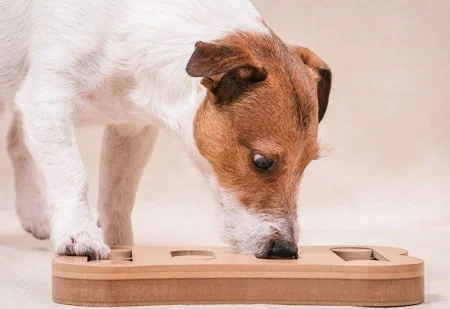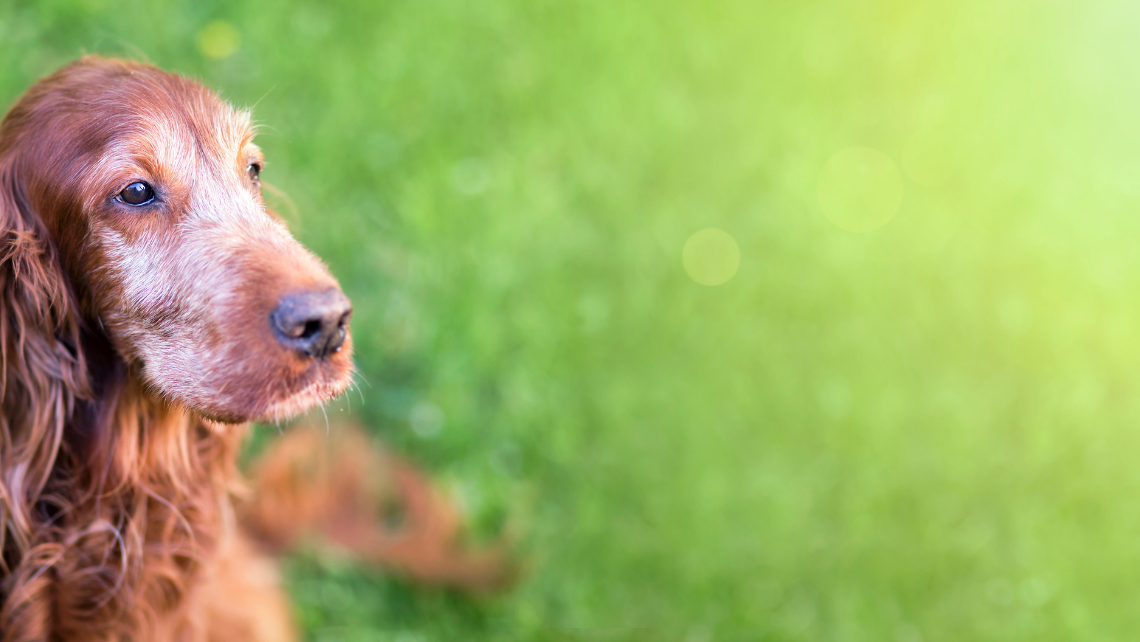Just like us, our animals also age. But now, thanks to advances in veterinary medicine, we have them by our side for much longer.
And in this process, it’s only natural that their days bring more and more challenges, so dedication and proper care make all the difference and are guaranteed to have a big impact on their overall well-being.
We know only too well that our senior dogs are absolutely precious and that they deserve to be rewarded with all the comfort, care and happiness we can give them. So we will give them nothing less than our best, starting with the essential care for this very special phase!
At what age is my dog considered a senior?
Perhaps one of the most common questions, without a simple answer. It depends.
Knowing if your dog is a senior pupper does not follow a single criterion, varying according to size, weight and/or body condition. Additionally, some dogs tend to age more rapidly than others, so factors such as their genetic background and overall health must also be taken into account.
Generally speaking, a senior animal is one whose average life expectancy is closer to 25%. So this means that dogs of large or giant breeds that tend to have shorter lifespans, are usually considered senior from 5-6 years of age. For medium breeds, 8-9 years old is generally assumed and the change from adulthood into seniority. Miniature and small breeds, on the other hand, have longer lifespans, so 10 years is considered the transitional age.
What are the most common signs of ageing?
One of the most significant changes in this phase and noticeable to the vast majority of pet parents is the decrease in general activity.
It is common for us to notice that our old dogs have less and less resistance to physical exercise, more difficulty getting out of bed, some reluctance to go up/down stairs and less enthusiasm for games, toys and/or food.
Many of them also begin to show less patience when faced with certain situations such as being around more active children and noisy people, as well as other more agitated dogs. Sometimes we even notice them confused, disoriented or less responsive than before. And not so rarely, the first “accidents” in the house may occur associated with urinary and/or fecal incontinence.
Some even exhibit substantial changes in sleep patterns and excessive vocalisations, which may sometimes be seen as an unforeseen nuisance, due to their frequency and timing, for family members and neighbours.
Many of these changes are part of the normal ageing process but in some cases they may be associated with specific illnesses and loss of general condition, which is why it is absolutely crucial that we maintain closely monitored follow-ups with our trusted medical-veterinarian team.
Is there anything I can do to “slow down” these signs?
Even with the best intentions, many of us find that our senior dog is no longer as involved in family life as before. Whether it’s because the dogs that once loved long walks are no longer able to keep up with us due to joint or neurological problems, or because other health conditions make it impossible for them to spend as much time with us.
Many times, we believe that the company of a new puppy will be enough to make a difference but it only ends up consuming even more of our time, without bringing any benefit to our old dog.
Therefore, in order for them to remain active members of our family for as long as possible it is imperative to promote environmental enrichment – to involve them in regular activities that preserve good cognitive performance while providing them with new social experiences.
How do we promote this environmental enrichment?
First of all, it is important to understand that all enrichment options should be tailored to each senior taking into account their history, physical condition, sensory abilities and mental state, among others.
Whatever the activity practiced, pre-existing medical or behavioural conditions must be safeguarded, always aiming to reduce pain, discomfort and the risk of an eventual trauma. Keep in mind that what works for a certain animal may not work for another.
That said, here are some examples of what we should do for our old dogs:
- Play – it will always be one of the best ways for us to stay connected with our seniors, and even if they no longer have the same energy we can opt for modified versions of their favourite games, or even try new ones, as long as they like and feel comfortable;
- Teach them new tricks – after all, it is never too late to teach them new things, thus ensuring mental stimulation and even developing new skills (do not forget the potential of positive reinforcement techniques);
- Develop sensory activities – many times we only detect the loss of eyesight and hearing when they are already at a more advanced stage, so it may be beneficial to introduce olfactory and tactile cues, such as new smells or different touch commands;
- Promote interaction with other dogs – even if they don’t play as much as they used to, this is always a time when they can socialize and “relax” with their usual or new friends, as long as they have the same mood and energy;
- Use food puzzles – they can be also very useful in seniors, as a way to exercise their brain and even stimulate their appetite by discovering the rewards placed there.

Is there a better food to help them through this phase?
There are already several commercial formulations on the market that are perfectly adjusted to their new needs and that generally tend to be more appealing, with fewer calories, high quality protein sources and inclusion of key nutrients to help them deal with the natural challenges of this stage.
However, nutrition for our animals is always a matter of considerable complexity, even more so at this stage when different processes can arise simultaneously and condition the most appropriate feeding type. Therefore, it should always be very well discussed with the veterinarian who usually accompanies them.
What other precautions should I take?
In addition to those already mentioned, there are some adjustments that are simple to implement and will greatly contribute to a significant improvement in their quality of life:
- Opt for shorter and more frequent walks;
- Use ramps or small platforms so that they can go up/down more easily;
- Place mats or walkways in slippery areas;
- Get good orthopaedic beds that will make them more comfortable;
- Use harnesses that facilitate their mobility;
- Offer meals more often a day, but in smaller quantities;
- Use height-adjustable supports for feeders and drinkers;
- Do not introduce abrupt changes to environment or routine, because they can lead to more stressful situations;
- Visit the vet more often (at least every 6 months, and whenever there is any change in their behaviour or the need to readjust some medication).
Older dogs are still our faithful and devoted companions of a lifetime, full of love and possibilities. They just need us, as family, to embrace the responsibility of enriching this phase, doing everything in our power to make the most of this time that we still have with each other.
For all your senior pet’s needs, medication reminders and other info, download the PETABLE App. It’s free and available for iOS and Android.

Leave a Comment